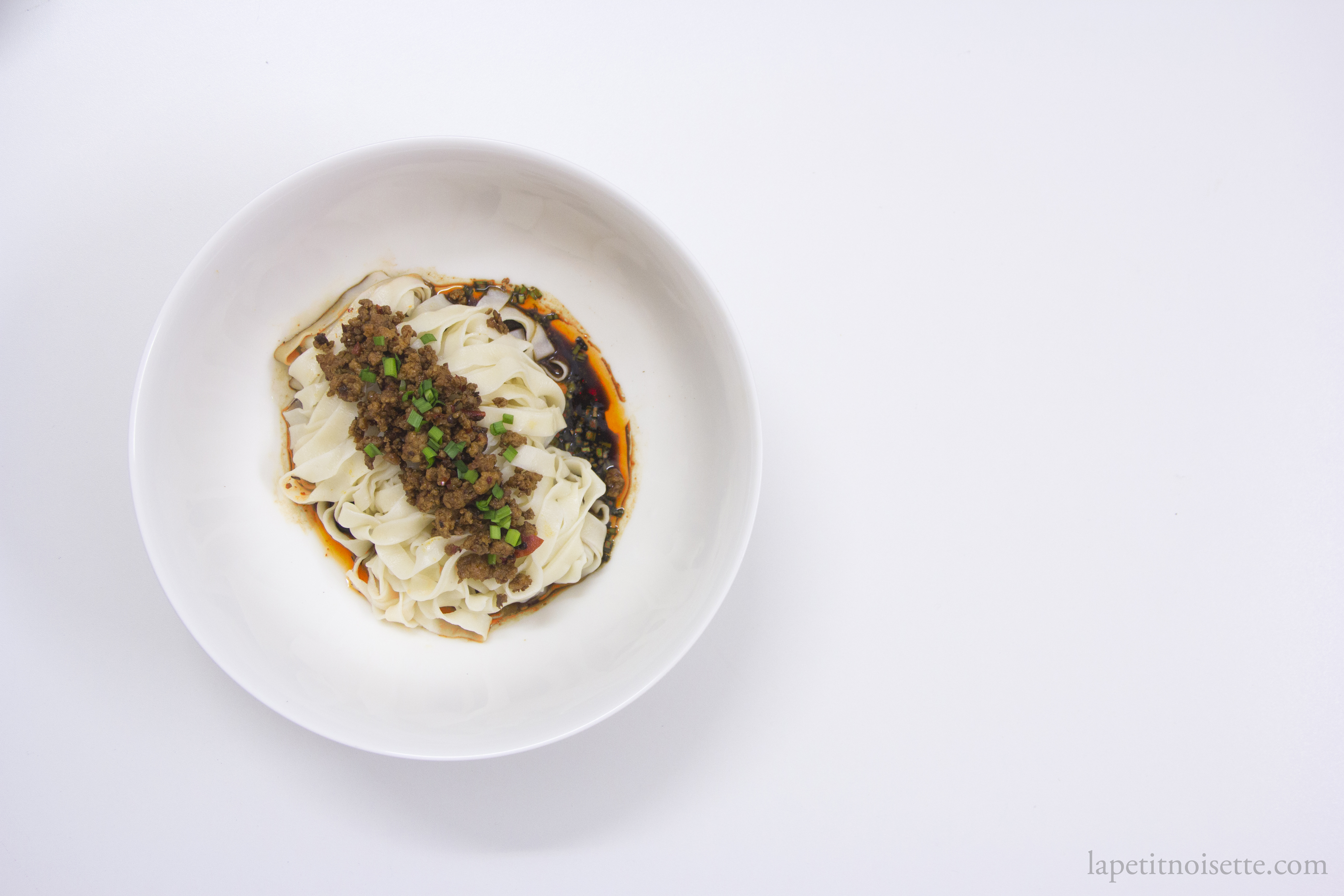
One of the types of food you learn to miss whilst living in Japan is definitely spicy food, which is not an element of traditional washoku. In Japan, the go to name for Sichuan cuisine was the late Chen Kenmin (陈建民), who’s gain to fame was serving as the chef for Chinese cuisine on the Iron Chef TV show. In 1958, he opened Shisen Hanten in Japan, and with his son, Chen Kenichi (陳建一), franchised many branches of the restaurant throughout Japan. Chen Kenichi himself also became an Iron Chef and went on to becoming the longest serving Iron Chef throughout the show’s life.
In 2014, Chen Kenmin’s grandson, Chen Kentaro, moved to Singapore to open a high end branch of Shisen Hanten situated in the Mandarin Orchard Singapore, which went on the earn 2 Michelin stars. Whilst they were famous for their Mapo Tofu, having eaten there a few times, I was always blown away by their dry Dan Dan Noodles. So, when I happened to be transiting through Changi airport, my friend kindly picked me up from the airport and ordered a serving of Shisen Hanten’s Dan Dan Noodles for takeaway. However, this takeaway meal wasn’t to be eaten immediately, but to be flown all the way back home to my kitchen where we could breakdown the recipe.
To be completely honest, it’s very obvious eating at Shisen Hanten that they use MSG heavily in their cooking, not that I have anything against MSG. If anything the use of MSG in moderation is acceptable and helps improve a flavour in dish. Having been invented in Japan, it’s also quite widely used. However, I tried to recreate the dish without the use of MSG, but instead using the actual flavours of the ingredients. The resulting outcome is a dish with more ingredients that isn’t as light, compared to Shisen Hanten’s version that is lighter but compensates using MSG.
To me, Dan Dan noodles isn’t about its spicy Sichuan punch, but about how it uses sesame seed paste to balanced out the other spices during the “dry-tossing” or Gan Ban stage (干拌). So in this recipe, extra effort is put into making the Chinese Sesame Seed Paste (芝麻酱), but feel free to use a store brought one.
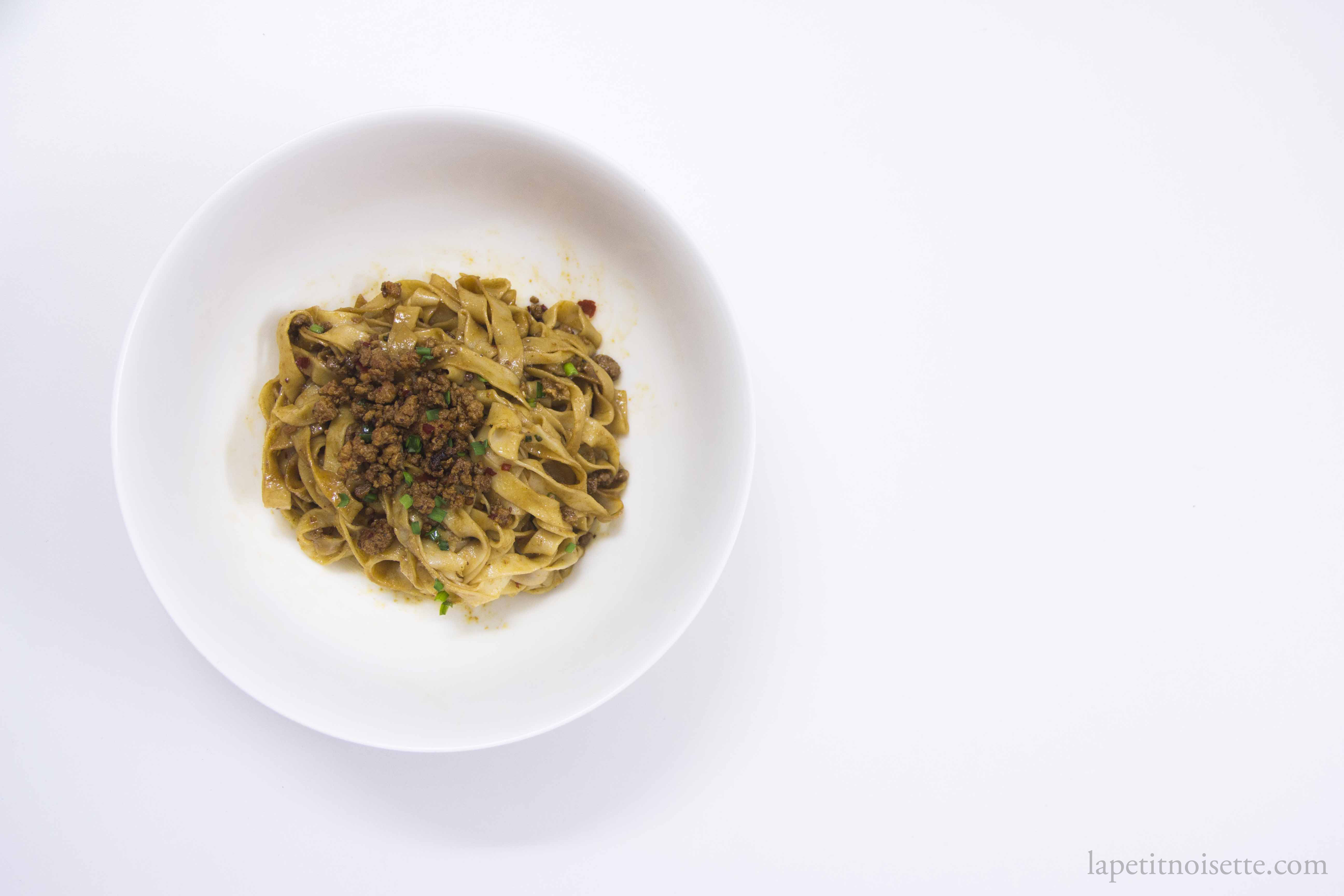
Shisen Hanten’s Dan Dan Noodles, 四川飯店担担麺
Sauce for 6 servings, each serving being:
- 150g of fresh uncooked noodles
- 100g of dried uncooked noodles
- 30g of Sesame Paste* (Recipe underneath)
- 100g light soy sauce
- 15g tsp dark soy sauce
- 180g of chile oil
- 15g Kagoshima Black Vinegar (黒酢); substitute with Chinese Black Vinegar (Chinkiang)
- 30g of pork lard
- 1 dash of ground Sichuan pepper
- If oil from the sesame seed paste has seperated, mix back together into a uniform consistency before use.
- Mix all the ingredients together until completely combined and measure out 60g of the sauce per serving of noodles. Store the rest in a jar and keep in the fridge for future use.
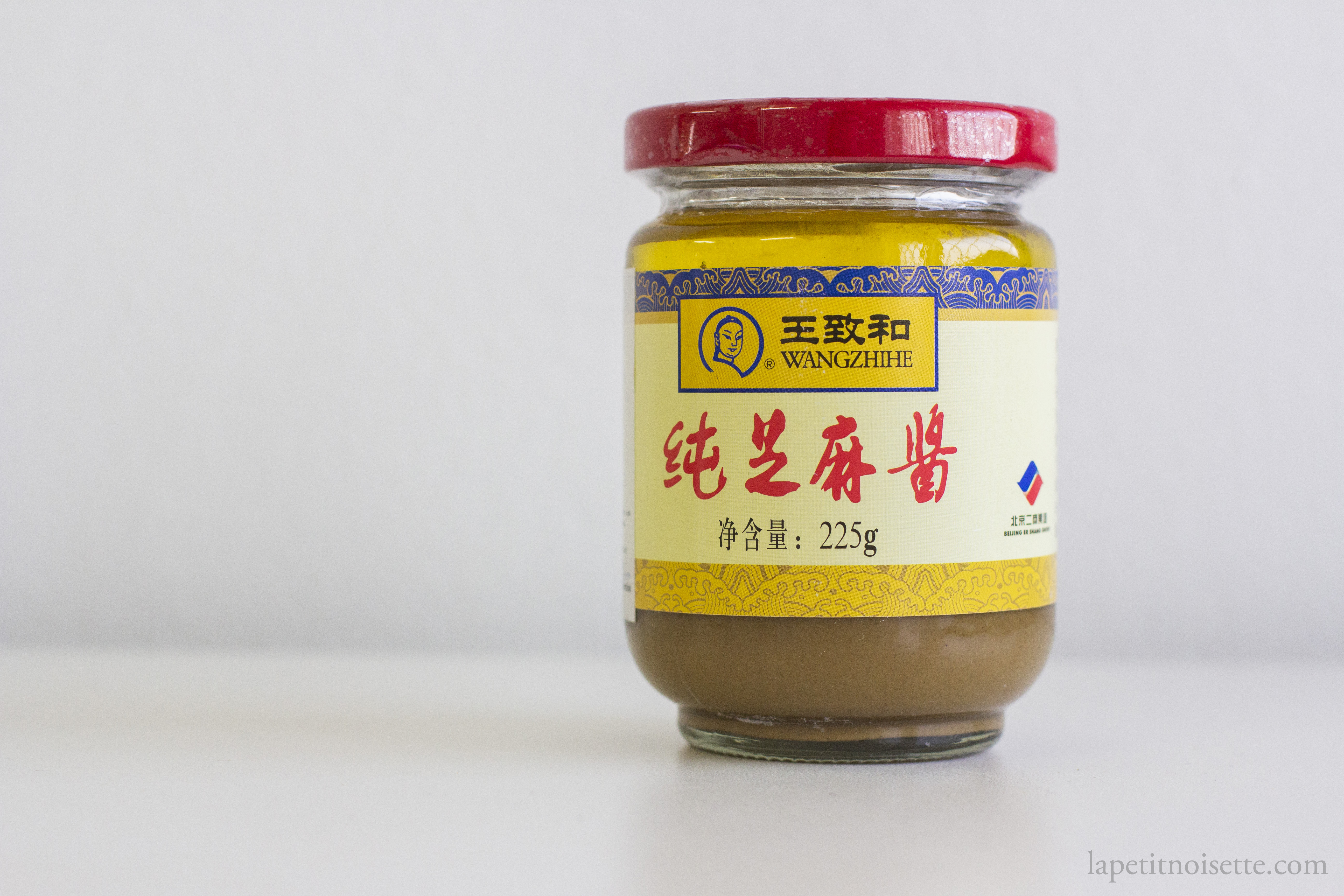
Fresh Noodles* (read at the end for notes)
Flour : Water ratio of 1 : 0.48
Flour : Salt ratio of 1 : 0.02 (2% salt in Baker’s percentages)
Or for 900g of fresh noodles (6 Servings)
- 608g of high protein flour (bread flour)
- 292g of water
- 12g of salt
- Dissolve the salt into the water.
- Mix together the flour and water and start kneading the dough all the flour has come off the side of the bowl.
- Knead until it bounces back slightly when pressed lightly with a finger.
- Place in a ziplock bag or cover with a wet towel and rest for 30 minutes.
- With a rolling pin and knife
- Roll out the dough to your desired thickness with a rolling pin and dust with flour. Try to roll the dough out into a rectangular shape.
- Fold the dough once and dust with flour again before folding again and dusting again.
- Cut the folded dough into noodles of desired thickness with a sharp knife.
- (Go watch a youtube video if any of this isn’t clear!)
With a pasta machine
- roll out the dough starting from the largest number on your pasta machine and slowly work your way down to a low number that suits your desired thickness (5 for my machine).
- Cut the dough using the machine’s cutter into thin noodles, which is the traditional style. (I cut mine into thick strips out of preference).=
- If the noodles/dough starts to stick to the tabletop, dust lightly with flour to prevent sticking.
- Store in a ziplock in the fridge or use immediately.
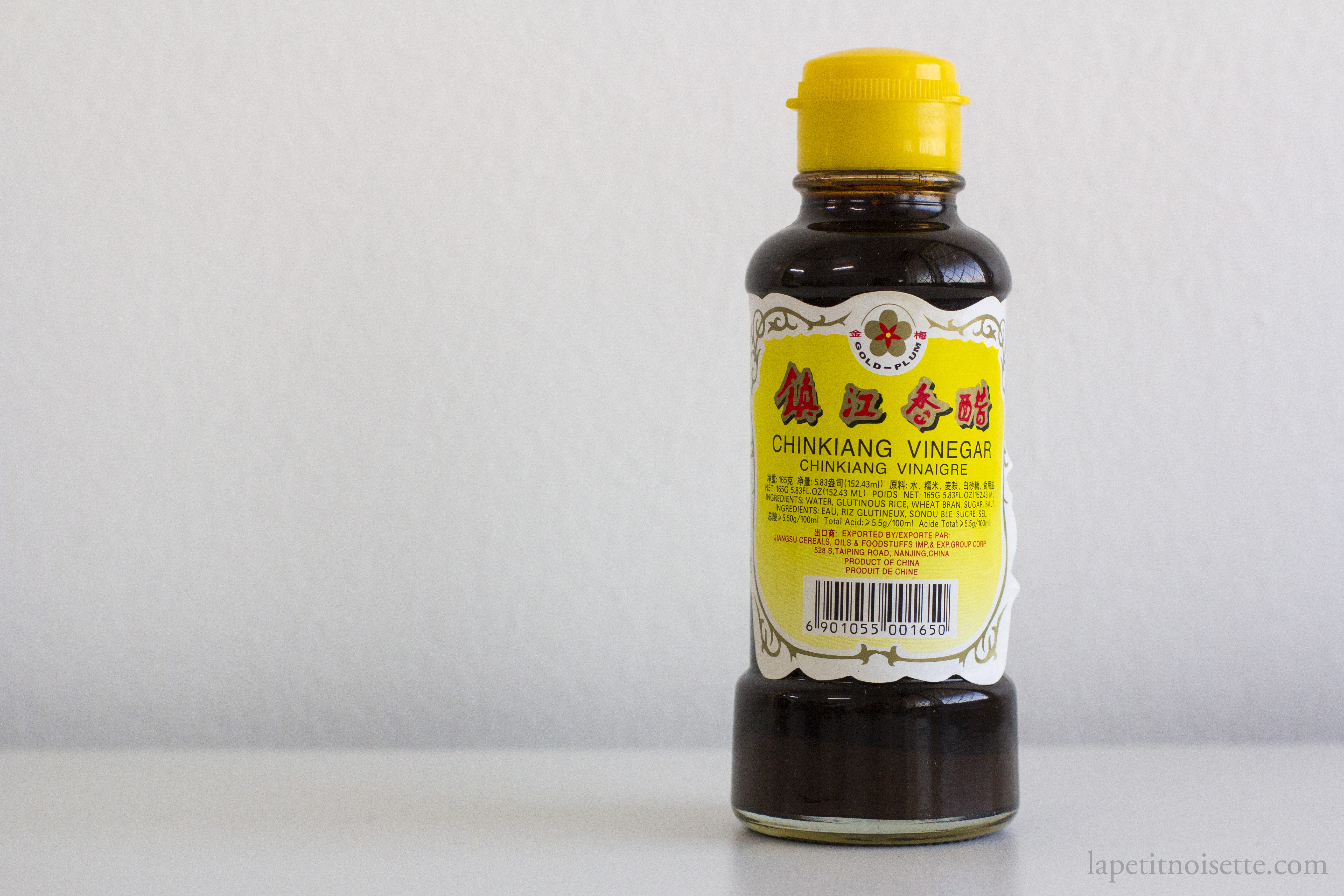
Noodle toppings (for 2 servings, not 6!)
- 45g of oil
- 5g of grated/finely chopped ginger
- 100g of mince pork
- 10g of Sake
- 5g of Tianmianjiang (Sweet Bean Sauce)
- 10g Soy Sauce
- Salt to taste
- 30g of Green Onions
- Heat the oil in a pan or wok until just smoking. You want the oil quite hot.
- Add in the mince pork and fry until fragrant and then add in the ginger.
- Add in the sake and soy sauce and deglaze the wok.
- Push the pork to the sides of the wok and allow the oil to pool at the bottom. Add in the Tianmianjiang and fry in the oil until fragrant.
- Mix everything back together and fry until done to your liking.
- Taste and adjust with salt to your liking.
- Reserve green onions for topping later with the meat.
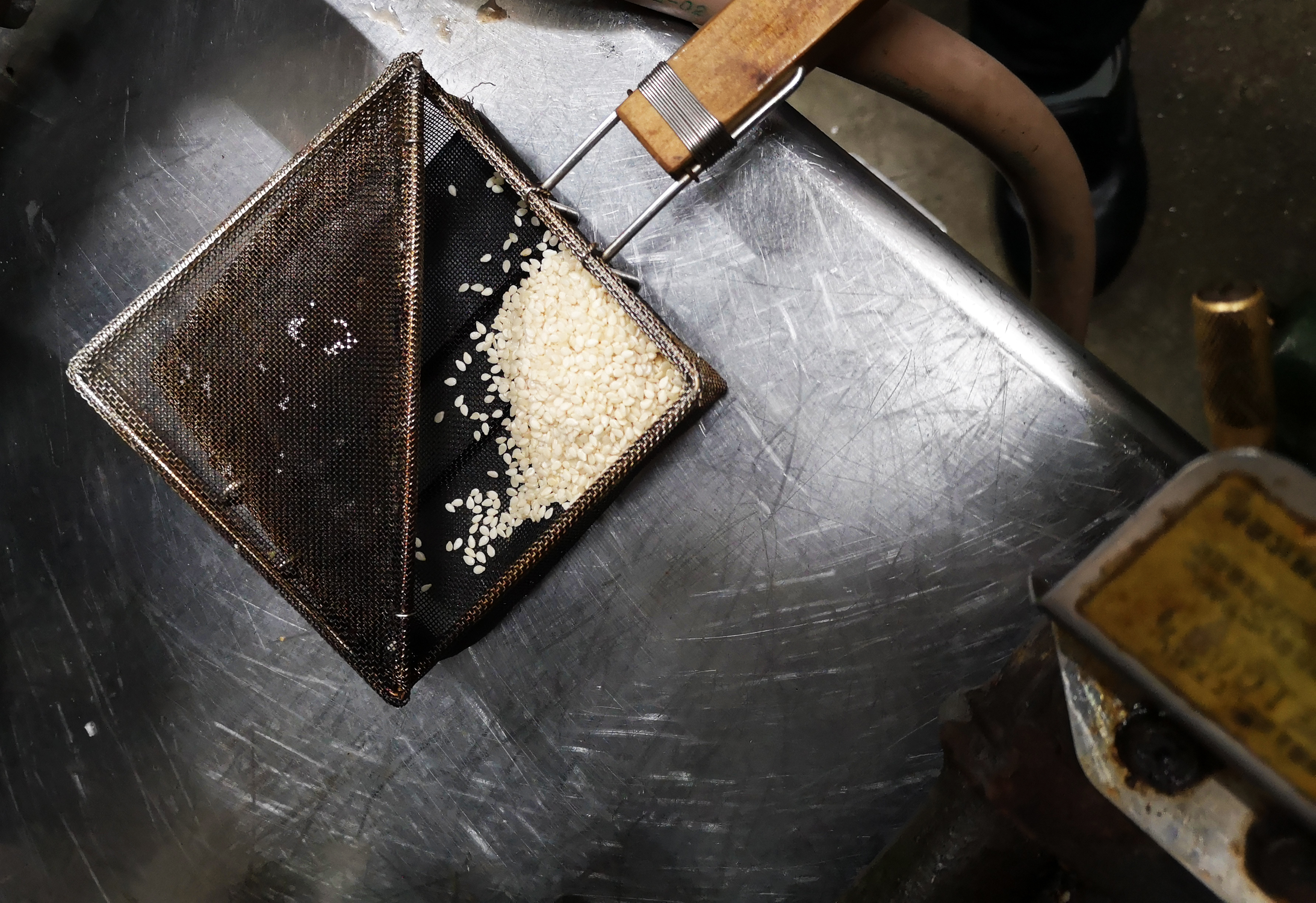
Assemble:
- Prepare a bowl with 60g of sauce mix.
- Cook in a pot of boiling water for 2 to 3 minutes depending on the thickness. The best way to judge is by taking out a strand and tasting it. Freshly made noodles cook very fast. The more flour you used to dust the noodles the largest the pot of water I suggest you use as the flour will cause the water to thicken and burn the noodles.
- Strain the noodles and toss a few times to remove water.
- Place the noodles in the bowl with sauce.
- Top with the meat toppings and garnish with chopped spring onions.
- Serve and allow the individual eating it to toss the noodles together themselves.
*Sesame Seed Paste (芝麻酱)
When working at a Japanese restaurant we would always make our sesame seed paste fresh every morning by roasting our sesame seeds over an open flame in a metal sesame seed cage roaster, before grinding them down by hand using a a traditional Japanese mortar (suribachi/擂鉢) and pestle (surikogi/擂粉木). The roaster we used at the restaurant was one made by Kanaami Tsuji (金網つじ) in Kyoto, which specialises in handwoven metal kitchen utensils. However, you can find them around Japan, like this one below:
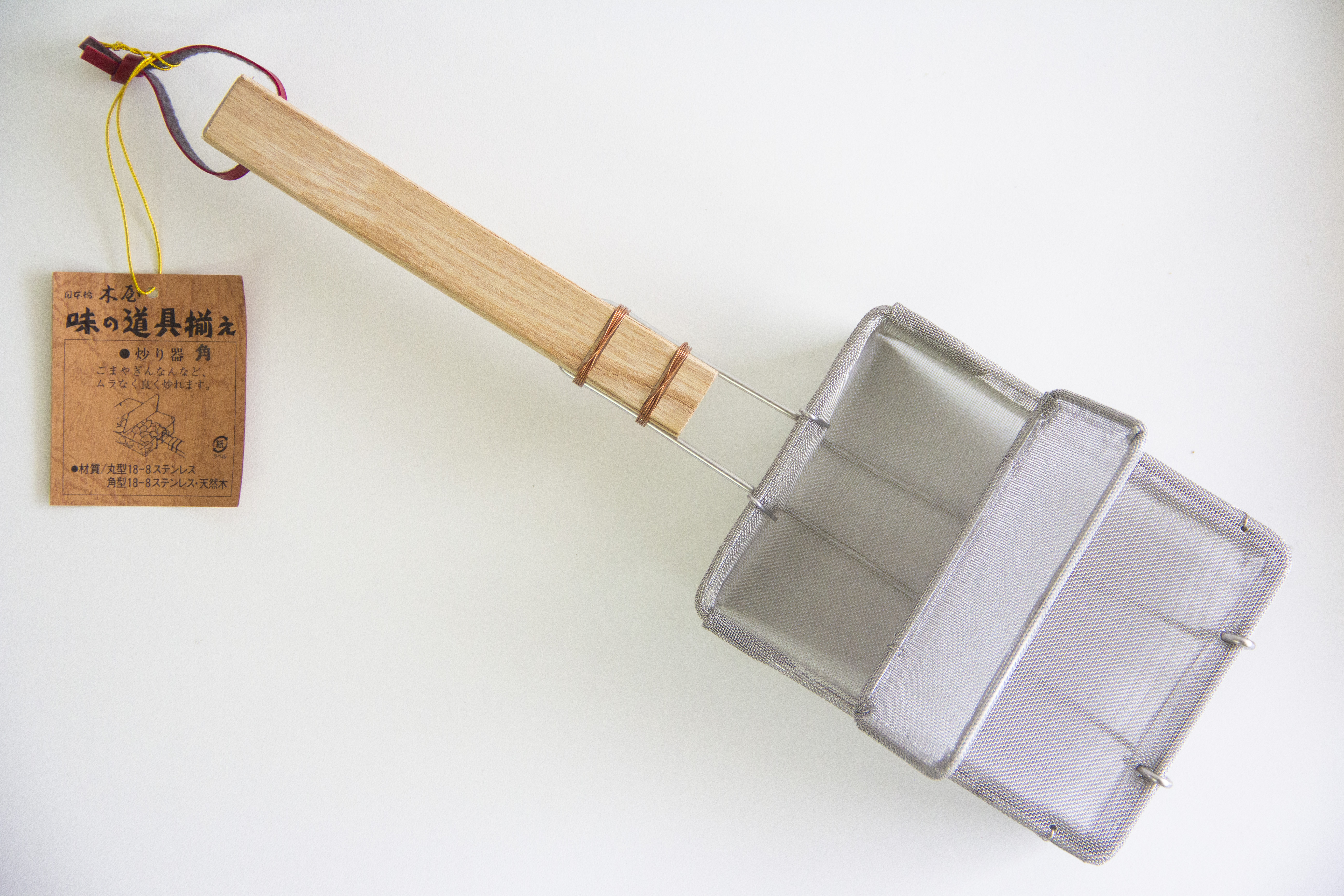
Alternatively, you could just use a dry pan to roast your sesame seeds, taking them on and off the hob to prevent them from burning as the heat retained by the pan will still continue to roast the sesame seeds.
- 60g of sesame seed oil
- 250g of white sesame seeds
- Sake in a spray bottle (completely optional of course)
- Pour the sesame seeds into the roasting cage.
- Spray the sesame seeds with sake through the roasting cage and shake the cage to spread the sake evenly.
- Gently shake the cage 30cm (1 foot) above a open flame/stove to gently roast evenly.
- After 30 seconds remove the cage from above the flame but continue shaking for 30 seconds.
- Return to above the flame and continue shaking to roast evenly.
- Repeat until just about golden and then shake without the flame until slightly cooled.
- Pour onto a paper towel and spread them out to cool down.
- Once cool pour the sesame seeds into the mortar and start grinding, adding a little oil at a time as you grind, forming a smooth paste.
- Continue grinding until all the oil is added and the sesame seeds have become a smooth paste, around 20 minutes (yes it is very labour intensive the traditional way).
- Alternatively, add the sesame seeds into a blender and blitz into powder before slowly drizzling in the sesame seed oil until a paste is formed.
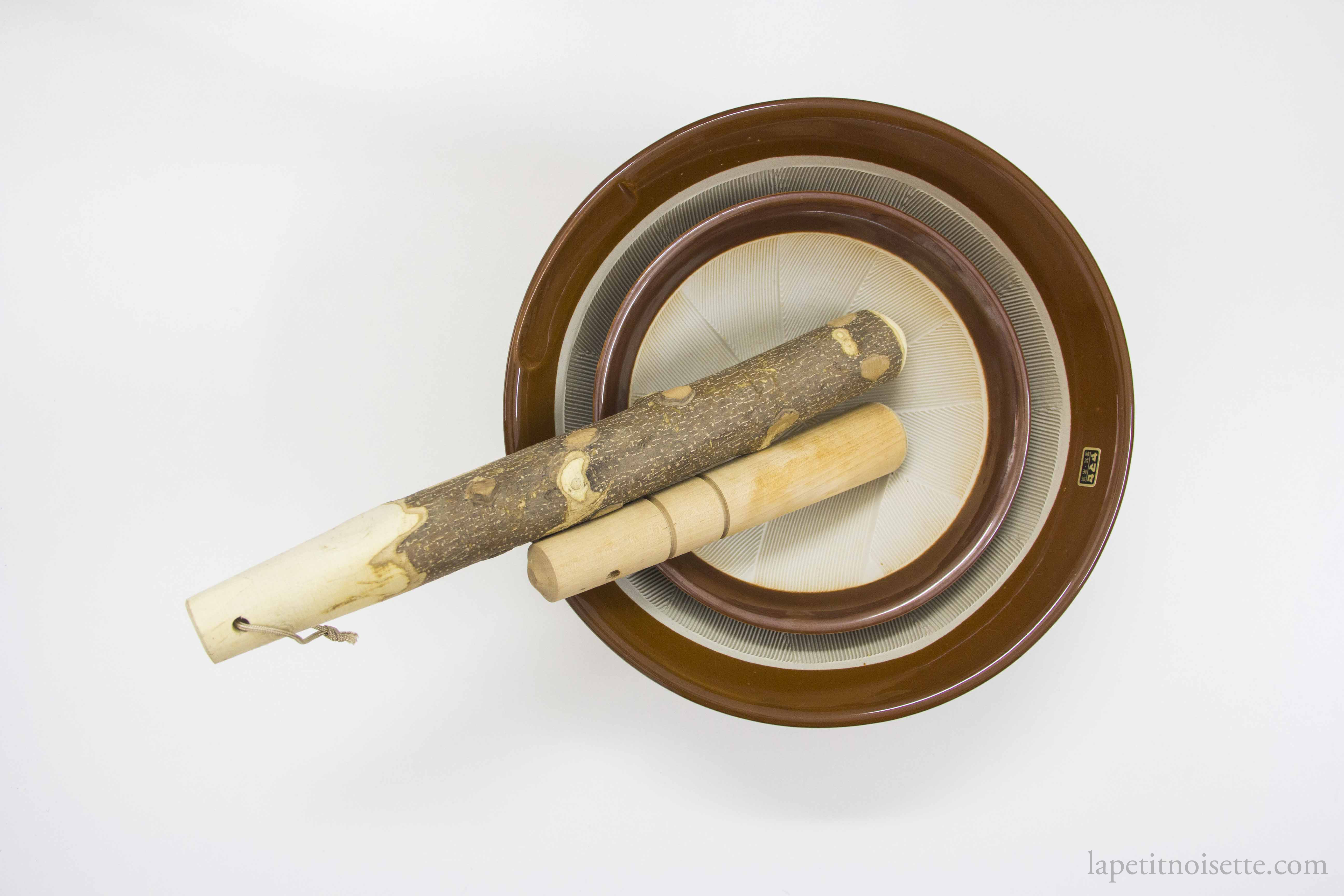
Kagoshima Black Vinegar (Kurozu/黒酢)
The black vinegar used in this recipe, more commonly known as Kurozu, is the Japanese black vinegar equivalent to Chinese Chinkiang vinegar (or Zhenjiang vinegar). Both vinegars are based off rice and allowed to age for long periods of time to create an amber-dark semi-transparent mellow vinegar, thus it’s name- black vinegar. Most of the Kurozu you find in Kagoshima nowadays however, are still traditionally made in large black clay urns that are allowed to sit out in the sub as they slowly age, with a lot of mainland Chinese tourist coming all the way to Kagoshima just to buy back this black vinegar to use back home in lieu of their own black vinegar. The main difference in production method of these two vinegars of course, is the use of koji in the Japanese production (no surprise there for my fermentation geek friends). In my opinion, it is this use of koji which makes this vinegar’s acid not as astringent compared to it’s Chinese counterpart, but instead more balanced, sweet and mellow. The use of Kurozu in this recipe of course isn’t strictly following “authentic” Sichuan cuisine, but then again Shisen Hanten is a Japanese Sichuan restaurant, so I think it’s rather appropriate. More information on koji and vinegar making can be found here. There’s also lots to read about Kagoshima Kurozu just a google away!
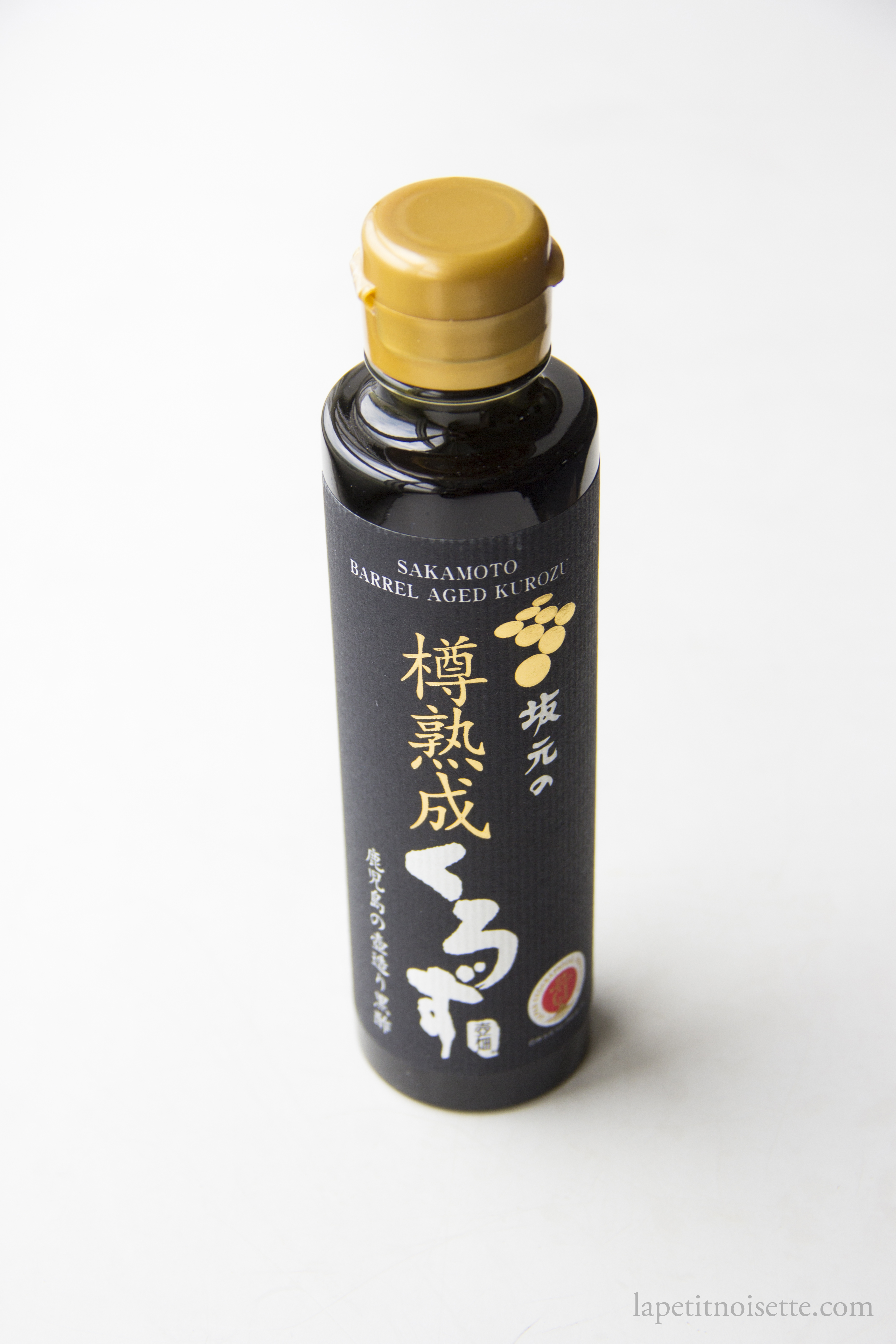
Optional for sauce (not to my taste):
Yibin yacai or preserved mustard greens have been traditionally added to dan dan men but I have chosen to omit them from my main recipe as they are not to my taste. The taste of preserved vegetables/meats have never really appealed to me as nowadays a lot of them are not preserved through fermentation but through factory processes. The use of preserved vegetables have also been linked to nasopharyngeal cancer among the Chinese community. However if you wish to add it in, Tianjin preserved vegetables is what I recommend as it’s more widely available around the world compared to preserved mustard greens.
For 6 servings:
- 50g cooking oil
- 100g of Tianjin preserved vegetable
Squeeze dry the preserved vegetables to remove any excess liquid and fry in hot oil until fragrant and mix into the sauce.
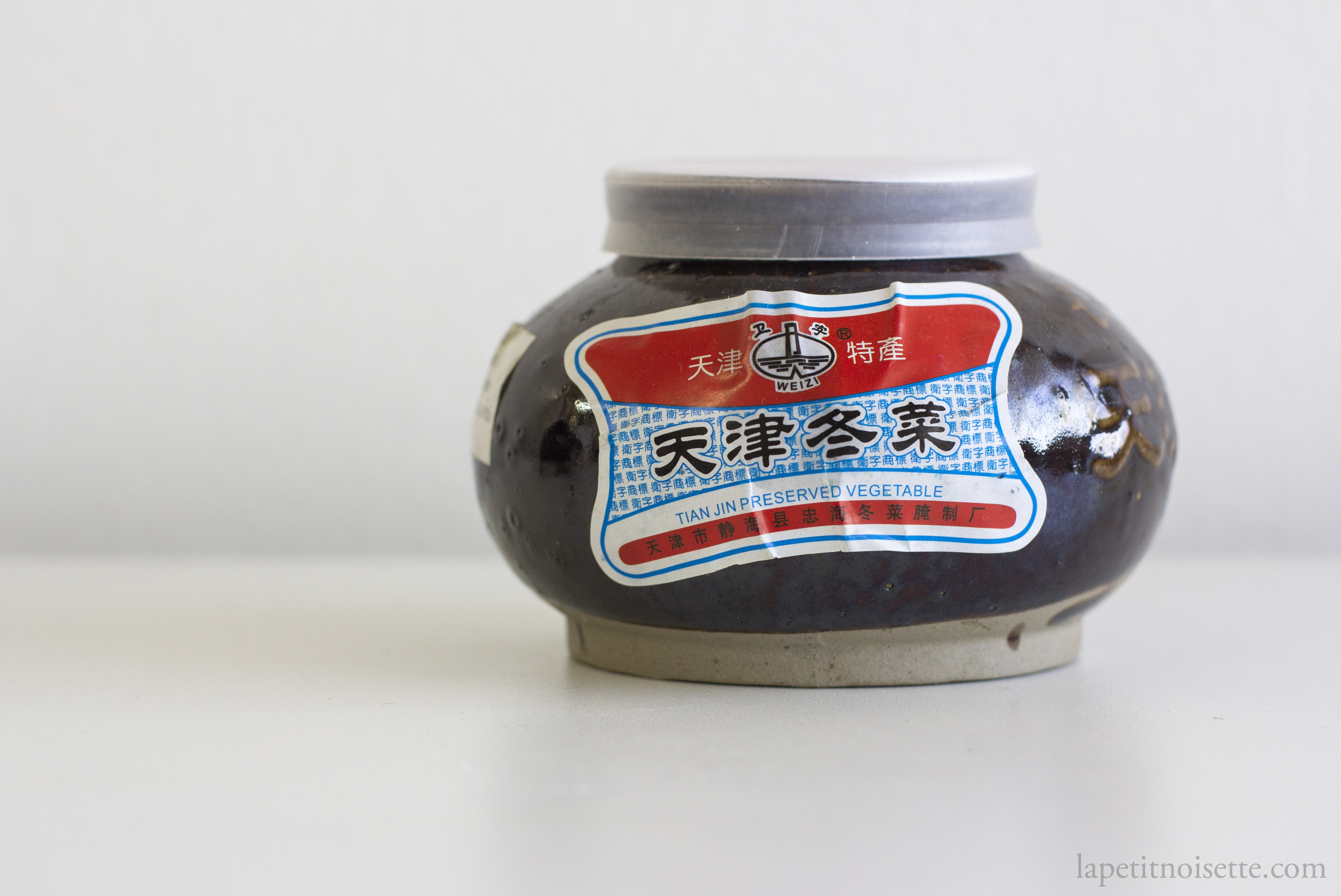
In Chinese cooking you usually fry the aromatics such as onions, ginger and garlic until fragrant before adding in the meat. In the recipe above you’ll notice that I fry the pork mince first before adding the ginger. This is because I find that with home stoves/burners and grocery store mince pork, the water content is so high that you don’t actually get to fry your mince meat, but rather sort of boil/steam it in their own juice. In order to avoid that, you need to start with a much hotter pan than usual, almost to the point that the oil is smoking. However, adding aromatics into such hot oil will instantly burn them, hence the reverse order of adding in meat then aromatics.